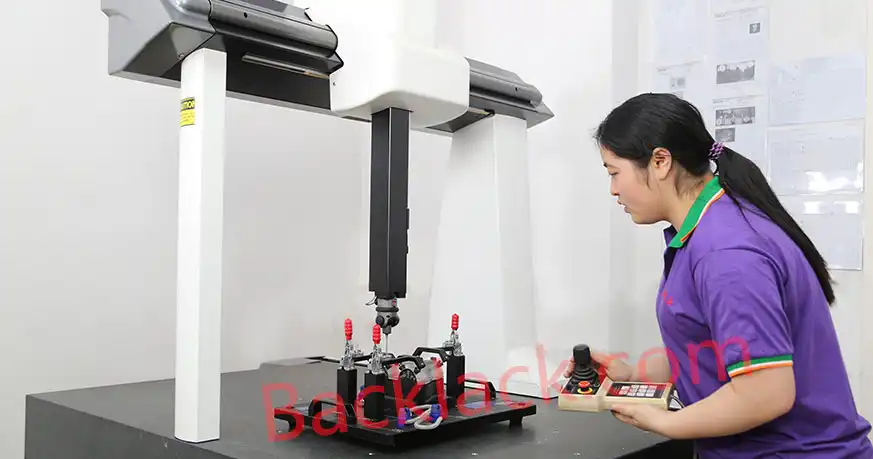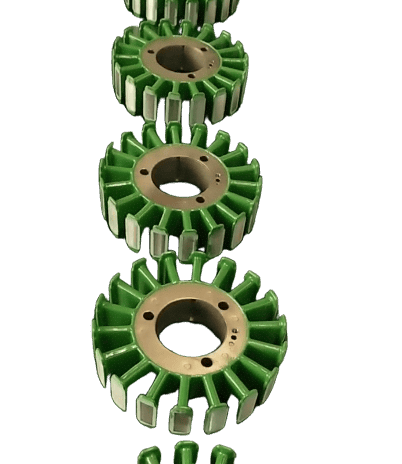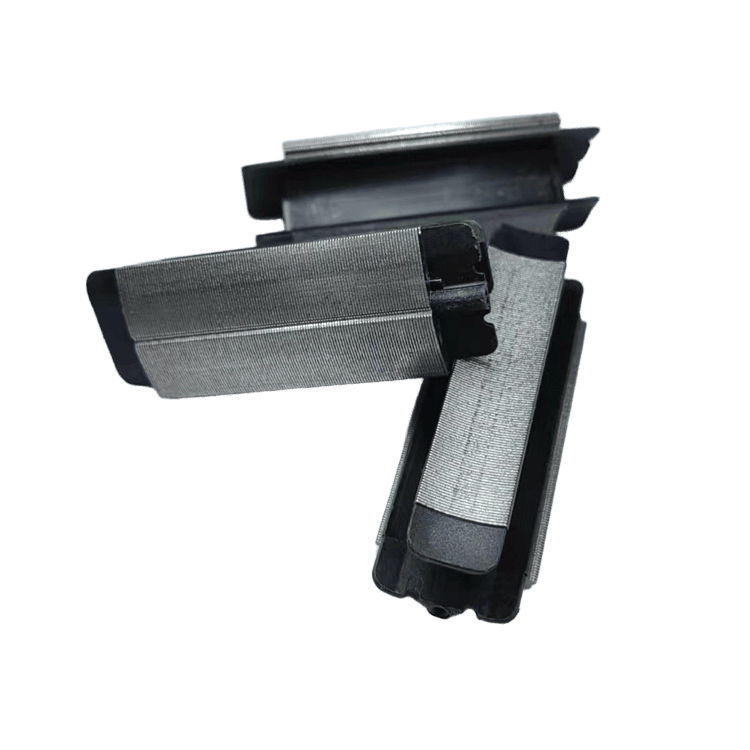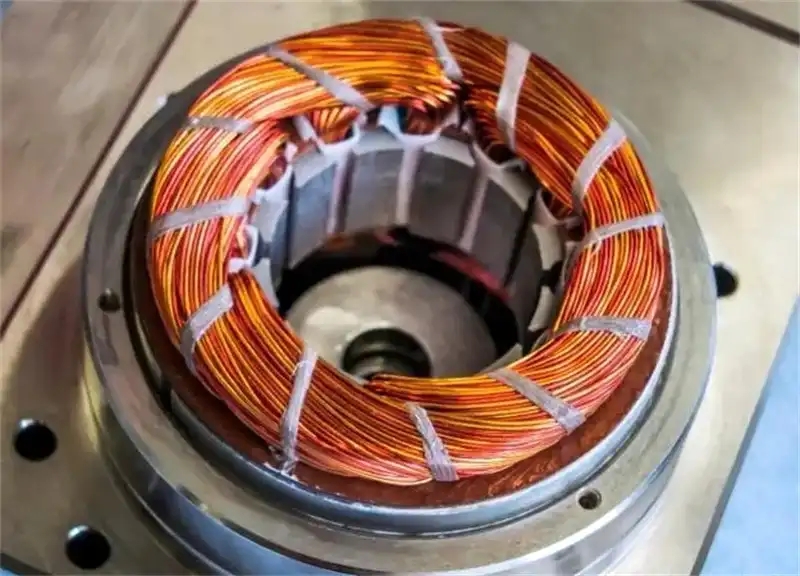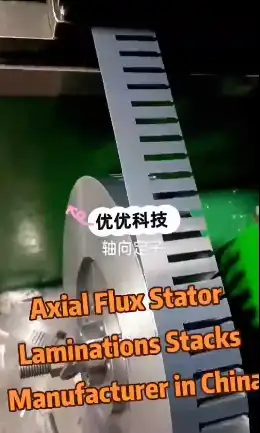What is self-adhesive silicon steel?
First, we need to understand its basic components:
- Silicon steel: Also known as electrical steel, it's the core material for manufacturing motor cores. By adding silicon, the resistivity of the material is increased, reducing "eddy current losses" generated in alternating magnetic fields, thereby improving motor efficiency.
- Self-adhesive layer: A special insulating coating with adhesive properties is applied to the surface of the silicon steel sheet. This coating can be activated under specific conditions (usually high temperature and pressure), generating strong adhesive force.
Combining these two elements results in self-adhesive silicon steel. After being stamped into stator/rotor laminations, it is heated and pressurized to firmly bond the sheets together, forming a more robust core.
Core Advantages of Self-Adhesive Silicon Steel in Automotive Drive Motors
Compared to traditional lamination processes requiring riveting or welding, self-adhesive silicon steel offers numerous performance improvements that perfectly meet the stringent requirements of electric vehicles for high power density, high efficiency, high speed, and low vibration and noise in drive motors.
-
Significantly Improved Stiffness and Strength, Adapting to High Speeds
Advantages: The bonded core becomes a quasi-integral structure, with interlayer bonding strength typically reaching 5-20 MPa. This significantly improves the overall stiffness and mechanical strength of the core.
Analysis: Electric vehicle motors are evolving towards higher speeds (e.g., from 12,000 rpm to 20,000 rpm or even higher). At high speeds, the rotor experiences enormous centrifugal forces. Traditional lamination cores may experience lamination bulging or deformation, leading to friction with the stator (stator rubbing) and motor damage. Self-adhesive cores effectively resist this deformation, ensuring safe and reliable motor operation at extreme speeds.
-
Reduced Iron Losses, Improved Motor Efficiency and Range
Advantages: Reduces stress damage and material performance degradation of silicon steel sheets caused by traditional mechanical connection methods (such as riveting and welding).
Analysis: The magnetic properties of silicon steel sheets (especially iron losses) are highly sensitive to mechanical stress. Riveting and welding processes generate large localized stress and heat-affected zones, leading to deterioration of the magnetic domain structure in those areas and increased eddy current and hysteresis losses. Self-adhesive technology uses physical bonding, avoiding this damage and thus better preserving the material's low iron loss characteristics. This helps improve motor efficiency, especially in urban driving conditions with frequent speed changes, indirectly increasing the vehicle's range.
-
Excellent NVH Performance (Reduced Vibration and Noise)
Advantages: Interlayer bonding effectively suppresses fretting and vibration between laminations.
Analysis: During motor operation, the core is subjected to magnetostriction (material "breathing") and electromagnetic forces generated by a high-frequency alternating magnetic field. In traditional laminated cores, these forces cause minute relative movements and vibrations between laminations, a significant source of electromagnetic noise in motors. The self-adhesive coating fills the gaps between laminations like "glue," absorbing and suppressing these vibrations through a damping effect, thus significantly reducing motor operating noise and improving vehicle ride comfort.
-
Improved Thermal Performance and Heat Dissipation Uniformity
Advantages: While the adhesive layer provides insulation, its thermal conductivity is generally better than air.
Analysis: In traditional cores, tiny air gaps exist between laminations, and air is a poor conductor of heat. The self-adhesive coating establishes a more efficient heat conduction path between the plates, helping to conduct heat generated inside the core (especially the teeth) more evenly and quickly to both ends of the core and the housing, where it is then carried away by the cooling system. This improves the uniformity of heat dissipation in the motor, helps reduce local hot spot temperatures, and enhances the motor's continuous power output capability.
-
Simplified Manufacturing Process, Improved Production Efficiency and Consistency
Advantages: Eliminates riveting or welding processes, simplifying the core assembly process.
Analysis: On automated production lines, stamped silicon steel sheets can be directly stacked and then bonded in a single heating and curing oven. This reduces production steps and equipment investment, improving production efficiency. Simultaneously, it avoids performance fluctuations caused by inconsistent riveting/welding quality (such as uneven riveting force and welding spatter), improving product consistency and reliability.
Comprehensive Analysis: Challenges and Considerations
Despite its significant advantages, the following factors need to be considered when applying self-adhesive silicon steel:
- Higher Cost: The material cost of self-adhesive silicon steel is higher than that of ordinary coated silicon steel. Furthermore, the production process requires additional heating and curing equipment (such as ovens) and a precise temperature control system.
- Strict Process Control Requirements: The bonding effect (strength) is highly dependent on three process parameters: temperature, pressure, and time. Inappropriate parameters can lead to weak bonding or coating aging.
- Poor Maintainability: Once the core is bonded as a whole, it is almost impossible to disassemble and repair. If manufacturing defects occur, the entire core may be rendered unusable.
- High Requirements for Coating Performance: The self-adhesive coating must maintain good insulation, heat resistance (typically needing to withstand temperatures above 180°C), adhesion, and stamping processability while possessing high bonding strength.
In summary
the application of self-adhesive silicon steel in automotive drive motors is a prime example of combining material innovation with process optimization. It cleverly resolves the multiple contradictions between mechanical strength, electromagnetic performance, and NVH performance in high-speed, high-efficiency, and high-power-density motors through a "bonding instead of riveting/welding" approach.
|
Comparison Dimensions |
Traditional silicon steel (riveting/welding) |
Self-adhesive silicon steel |
|
Mechanical Strength |
Generally, prone to sheet expansion at high speeds |
Excellent, strong integrity, suitable for high speeds |
|
Iron Loss/Efficiency |
Highly affected by machining stress |
Lower speeds, maintains the original magnetic properties of the material |
|
NVH Performance |
Miniature movement between sheets, resulting in relatively high noise |
Superior, damping and vibration reduction, low noise |
|
Heat Dissipation Performance |
Generally, air insulation is provided between sheets |
Better, improved heat conduction path |
|
Manufacturing Process |
Requires riveting/welding, involving multiple processes |
Simplified, single-stage heating and molding after stacking |
|
Cost |
Low material cost, moderate process cost |
High material cost, equipment investment required |
Conclusion
As the performance requirements of electric vehicles continue to increase, self-bonding silicon steel is gradually becoming one of the preferred materials for high-end drive motors. Despite the challenge of higher costs, its comprehensive performance benefits—especially in ensuring high-speed reliability and improving energy efficiency—make it a key material driving the development of next-generation electric drive technologies. For vehicles pursuing ultimate performance, long range, and low noise, the use of self-bonding silicon steel is a highly valuable technological choice.
About Youyou Technology
Youyou Technology Co., Ltd. specializes in the manufacture of Self-bonding precision cores made of various soft magnetic materials, including Self-bonding silicon steel, ultra-thin silicon steel, and Self-bonding specialty soft magnetic alloys. We utilize advanced manufacturing processes for precision magnetic components, providing advanced solutions for soft magnetic cores used in key power components such as high-performance motors, high-speed motors, medium-frequency transformers, and reactors.
The company Self-bonding precision core products currently include a range of silicon steel cores with strip thicknesses of 0.05mm(ST-050), 0.1mm(10JNEX900/ST-100), 0.15mm, 0.2mm(20JNEH1200/20HX1200/ B20AV1200/20CS1200HF), and 0.35mm(35JNE210/35JNE230/ B35A250-Z/35CS230HF), as well as specialty soft magnetic alloy cores including 1J22 and 1J50.
